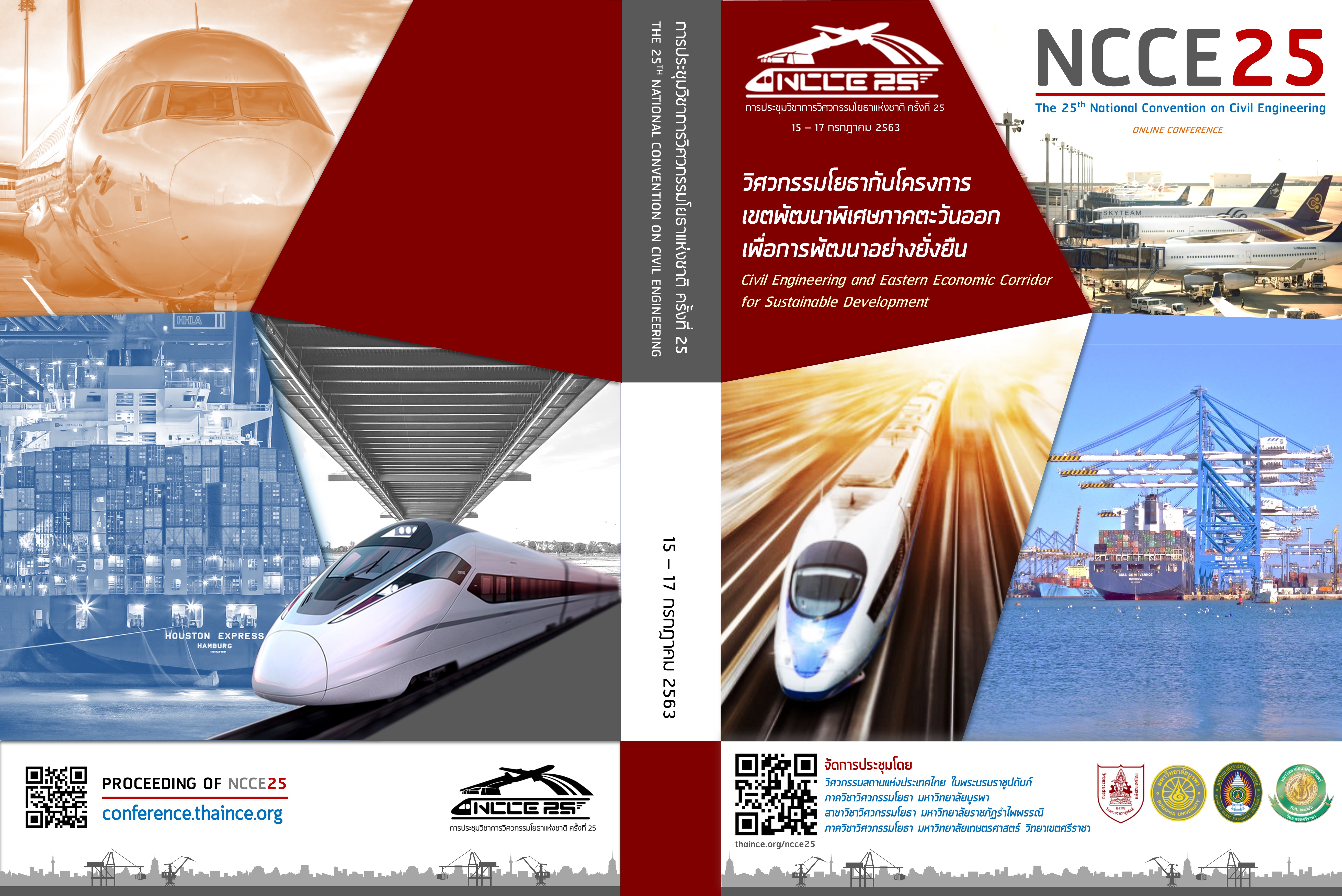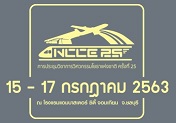Accuracy of pile capacity from static analysis
Keywords:
pile capacity, pile load test, accuracy, precision, factor of safetyAbstract
This research evaluates accuracy and precision of pile capacity calculation by Meyerhof (1976)method by calibrating the predictions with results of static and dynamic pile load tests for piles with their tips embedded in sand. The skin friction predictions are calibrated with results of dynamic pile load tests. The end bearing predictions are calibrated with results of static and dynamic pile load tests. The study finds that pile capacities from dynamic pile load tests are 63% and 68% of those from static pile load tests for bored and driven piles, respectively. The calculated end bearings are 21% and 52% of actual end bearings for bored and driven piles, respectively. The calculated skin frictions are 42% and 54% of actual skin frictions for bored and driven piles, respectively. The calculated ultimate pile capacities are 34% and 59% of pile capacities from static pile load tests. It is also found that the calculated skin frictions are more precise than the calculated end bearings. The end bearings have COV of 0.88 and 0.74 for bored and driven piles, respectively. The skin frictions have COV of 0.46 and 0.32 for bored and driven piles, respectively. Finally, the proposed factors of safety are 5, 1.5, and 2.5 for end bearing, skin friction, and ultimate capacities, respectively.
Downloads
References
[2] Dennis, N. D., and Olson, R. E. (1983). Axial Capacity of Steel Piles in Sand, ASCE conf. on Geotechnical Practice in Offshore Engineering, Austin, Texas.
[3] Meyerhof, G. G. (1976). Bearing Capacity and Settlement of Pile Foundations. Journal of the Geotechnical Engineering Division. American Society of Civil Engineers, Vol. 102, No. GT3, pp. 197–228.
[4] Ng, K. C., (1982). The construction problems and performance of large bored pile in 2nd sand layer. Asian Institute of Technology, Thailand, No. GT 82-26
[5] Samuel G. Paikowsky and Terry A. Tolosko. (1999). Extrapolation of Pile Capacity from Non-Failed Load test U.S. Department of Transportation: FHWA-RD-99-170
[6] Seed, H. B., Arango, I., and Chan, C. K. (1975). Evaluation of Soil Liquefaction Potential during Earthquakes, Report No. EERC 75-28, Earthquake Engineering Research Center, University of California, Berkeley.
[7] พีชยา ทวีเลิศ (2539). การประเมิณการทดสอบการรับน้ำหนักของเสาเข็มด้วยวิธีพลศาสตร์ในชั้นดดินกรุงเทพฯ และระยอง. วิทยานิพนธ์ปริญญามหาบัณฑิต, สาขาวิชาวิศวกรรมโยธา, จุฬาลงกรณ์มหาวิทยาลัย
[8] วรรณวรางค์ รัตนานิคม และ สยาม ยิ้มศิริ (2561). การประเมินความแม่นยำ8ของค่ากำลังรับน้ำหนักบรรทุกของเสาเข็ม โดยวิธีสถิตยศาสตร์. การประชุมวิชาการวิศวกรรมโยธาแห่งชาติ ครั้งที่ 23, นครนายก, 18-20 กรกฎาคม 2561
Downloads
Published
How to Cite
Issue
Section
License
บทความทั้งหมดที่ได้รับการคัดเลือกให้นำเสนอผลงานในการประชุมวิชาการวิศวกรรมโยธาแห่งชาติ ครั้งที่ 25 นี้ เป็นลิขสิทธิ์ของ วิศวกรรมสถานแห่งประเทศไทย ในพระบรมราชูปถัมภ์



